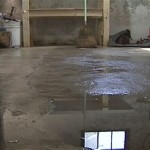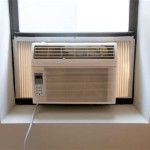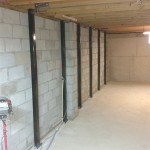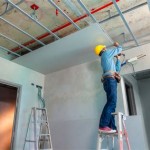Basement Flooded Hot Water Heater Won't Light: Troubleshooting and Safety
A flooded basement is a homeowner's nightmare, and when that flood encompasses the hot water heater, the situation becomes even more complicated. A hot water heater that refuses to ignite after being submerged in floodwater presents a combination of electrical and mechanical challenges that require careful diagnosis and resolution. The primary concern is safety, followed by a methodical approach to determine the extent of the damage and whether repair or replacement is the more prudent course of action.
Floodwater introduces contaminants such as sewage, chemicals, and debris into the mechanical systems of the heater. This contamination can impede the proper functioning of the burner, gas valve, and other critical components. Moreover, the electrical components are particularly susceptible to damage from exposure to water, potentially creating short circuits, corrosion, and rendering the heater inoperable. This article will explore the potential causes of a hot water heater failing to light after a flood, the safety precautions necessary to undertake, and the steps involved in diagnosing and addressing the problem.
Safety First: Disconnecting Power and Gas
Prior to initiating any inspection or repair work on a flooded hot water heater, it is imperative to prioritize safety. The first step is to disconnect both the electrical power and the gas supply to the unit. For electric water heaters, locate the circuit breaker that controls the heater and switch it to the "off" position. It is advisable to test the circuit to confirm that the power is indeed disconnected. This can be done using a non-contact voltage tester. Never touch a flooded electric water heater without verifying that the power is off to avoid the risk of electrocution.
For gas water heaters, the gas supply line will have a shut-off valve. This valve is usually located on the pipe leading into the water heater. Turn the valve to the "off" position, typically a quarter-turn, so that it is perpendicular to the pipe. If the valve appears corroded or difficult to turn, do not force it. Contact a qualified plumber or gas technician to handle the shut-off. After shutting off the gas, it's also important to ventilate the basement to ensure no gas leaks are present. Opening windows and doors can help dissipate any accumulated gas. A gas leak detector can be used to confirm the absence of gas before proceeding.
Standing water presents a shock hazard. Ensure that the area around the water heater is as dry as possible before starting work. If necessary, use a pump to remove standing water. Wear appropriate protective gear, including rubber boots and gloves, to further minimize the risk of electrical shock and exposure to contaminated water. Never assume that the area is safe simply because the power and gas are disconnected; always exercise caution.
Identifying Potential Causes of Ignition Failure
Once safety precautions have been taken, the next step is to diagnose the potential causes of the hot water heater's failure to ignite. Several factors could be at play, and a systematic approach is crucial for identifying the root cause. The most common reasons include a malfunctioning gas valve, a damaged thermocouple or flame sensor, a wet or shorted igniter, sediment buildup in the burner, and damage to the electrical components.
The gas valve is responsible for regulating the flow of gas to the burner. Floodwater can corrode or damage the gas valve, preventing it from opening or closing properly. A faulty gas valve will prevent the burner from receiving the necessary fuel to ignite. The thermocouple or flame sensor is a safety device that detects the presence of a flame. If the thermocouple is damaged or not properly positioned, it will not sense the flame, and the gas valve will shut off the gas supply. Floodwater can also damage the thermocouple, rendering it inoperable.
The igniter, whether it's a spark igniter or a hot surface igniter, is responsible for initiating the combustion process. A wet or shorted igniter will not produce the necessary spark or heat to ignite the gas. Floodwater can easily damage the igniter, especially if it is an electronic component. Sediment buildup in the burner can also impede ignition. Floodwater often carries sediment and debris, which can clog the burner and prevent the gas from flowing freely. This blockage can disrupt the air-gas mixture necessary for combustion.
Electric water heaters have different ignition systems, typically relying on heating elements submerged in the water tank. Floodwater can corrode these elements or cause them to short circuit. The thermostat, which controls the temperature and activates the heating elements, can also be damaged by floodwater. Diagnosing an electric water heater involves checking the continuity of the heating elements, the condition of the thermostat, and the functionality of the electrical wiring.
Step-by-Step Diagnostic and Repair Procedures
After outlining potential causes, a methodical approach to diagnosis and repair is required. This involves several steps, starting with a visual inspection and followed by testing individual components.
Begin with a thorough visual inspection of the hot water heater. Look for signs of corrosion, water damage, and debris. Check the gas valve, thermocouple, igniter, and burner for any visible signs of damage. Inspect the wiring and connections for corrosion or loose connections. If you notice any obvious damage, such as a cracked gas valve or a corroded igniter, replace it immediately. Clean the exterior of the water heater and the surrounding area to remove any mud, silt, or debris left behind by the floodwater.
Next, test the individual components. For gas water heaters, start by testing the thermocouple. Use a multimeter to check the voltage output of the thermocouple. A healthy thermocouple should produce a reading of around 25-30 millivolts. If the voltage is lower than this, the thermocouple is likely faulty and needs to be replaced. Test the igniter by observing whether it produces a spark or heats up when the gas valve is activated. If the igniter does not spark or heat up, it needs to be replaced. Clean the burner by removing any sediment or debris that may be blocking the gas flow. Use a wire brush or compressed air to clear any obstructions. Inspect the gas valve for proper operation. If the gas valve is not opening or closing properly, it needs to be replaced.
For electric water heaters, test the heating elements for continuity using a multimeter. A heating element with continuity is working properly, while an element without continuity is faulty and needs to be replaced. Test the thermostat by checking its resistance. A thermostat with the correct resistance is functioning properly, while a thermostat with incorrect resistance needs to be replaced. Inspect the wiring and connections for corrosion or loose connections. Repair or replace any damaged wiring or connections.
After testing and replacing any faulty components, reassemble the hot water heater and reconnect the power and gas supply. Turn the gas supply on slowly and check for gas leaks using a soapy water solution. If you detect any gas leaks, turn off the gas supply immediately and contact a qualified plumber or gas technician. Turn the power on and test the hot water heater. If the heater still fails to light, further troubleshooting may be necessary, or the heater may need to be replaced.
It is important to consider the extent of the flood damage when deciding whether to repair or replace the hot water heater. If the heater was submerged for an extended period, or if the floodwater was heavily contaminated, it may be more cost-effective and safer to replace the heater rather than attempting to repair it. A new hot water heater will provide peace of mind and ensure reliable hot water supply.
Considerations for Professional Assistance
While some homeowners may be comfortable performing basic diagnostic and repair tasks, certain situations warrant the involvement of a qualified professional. Working with gas and electricity can be dangerous, and improper repairs can lead to serious consequences, including gas leaks, electrical shocks, and fire hazards. If you are not comfortable working with gas or electricity, or if you are unsure about any aspect of the repair process, it is best to contact a qualified plumber or electrician.
A professional plumber or electrician will have the expertise and equipment necessary to diagnose and repair a flooded hot water heater safely and effectively. They can also assess the extent of the flood damage and advise you on whether repair or replacement is the best option. Additionally, a professional can ensure that the repairs are performed in accordance with local codes and regulations, which is important for safety and insurance purposes.
When selecting a professional, be sure to choose a licensed and insured plumber or electrician with experience in repairing flooded hot water heaters. Ask for references and check online reviews to ensure that the professional has a good reputation. Obtain a written estimate before any work is performed, and be sure to understand the scope of the work and the cost. Do not hesitate to ask questions and clarify any concerns you may have.
Furthermore, it's crucial to understand that insurance companies often have specific requirements for flood damage claims. Documenting the damage with photos and videos before any repairs are made is essential. Contact the insurance company to determine if the hot water heater replacement or repairs are covered under the policy. Following the insurance company's guidelines will help ensure a smoother claims process.

Gas Water Heater Pilot Will Not Light After Ceiler Flooded

Water Heater Flooding 101

Fix Your Gas Water Heater Flooded Basement Repair

What Do I About A Flooded Water Heater Or Hvac System Oliver

How To Fix Gas Water Heater After A Flood 14 Steps

How To Light A Water Heater After Flood

Gas Water Heater Pilot Will Not Light After Ceiler Flooded Youtube
Water Heater Flooding 101

Water Heater Flooding 101

How To Fix Gas Water Heater After A Flood 14 Steps
Related Posts







